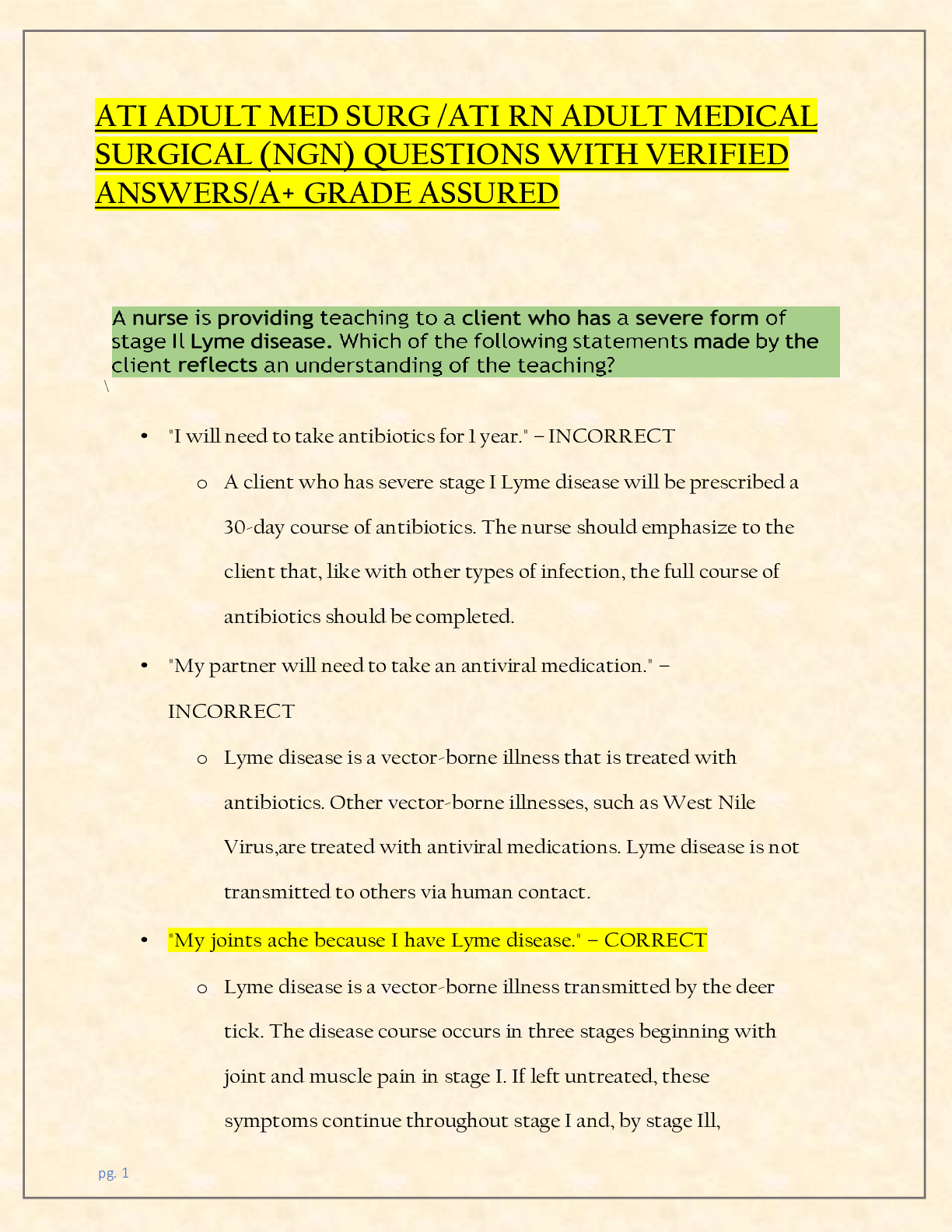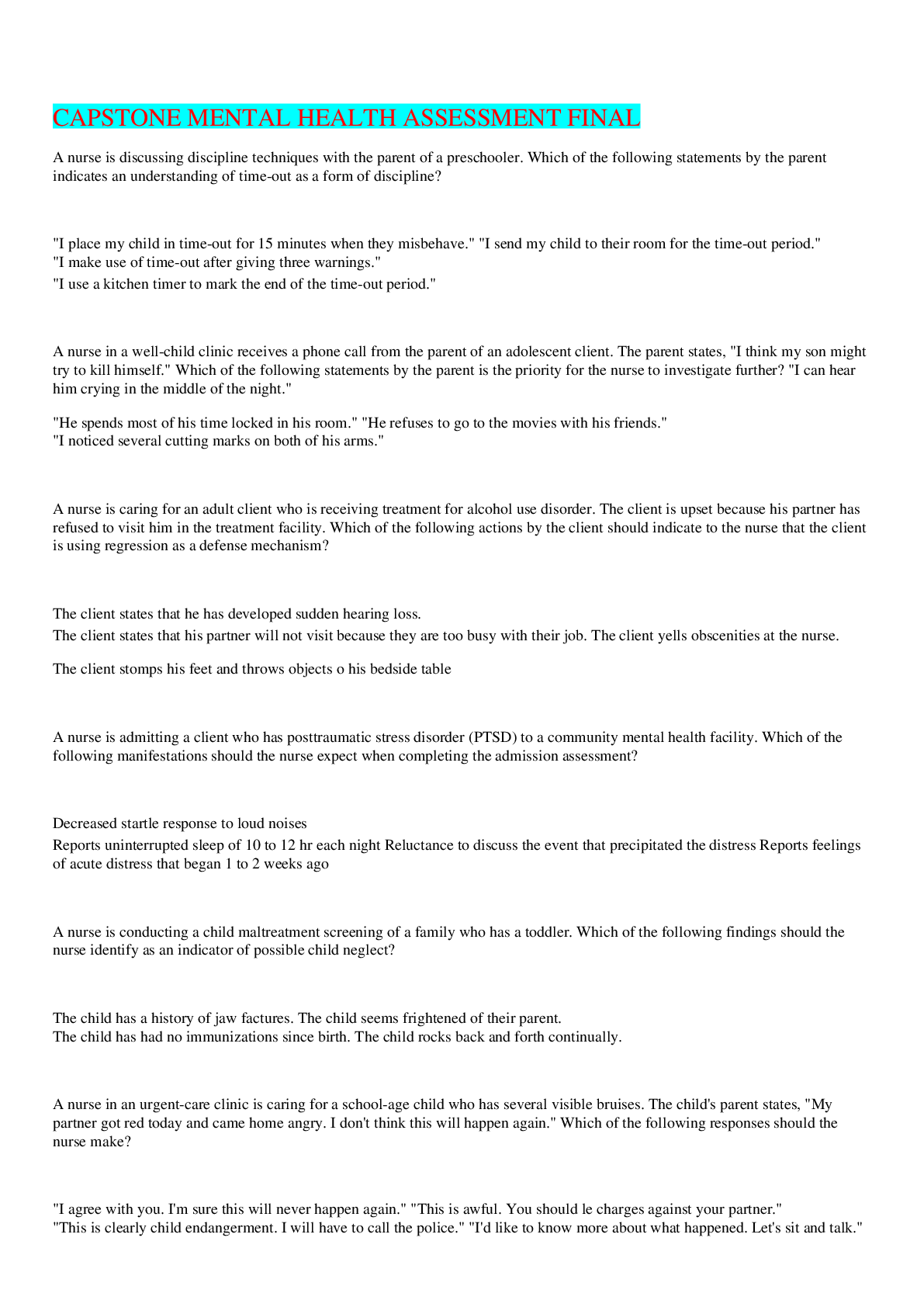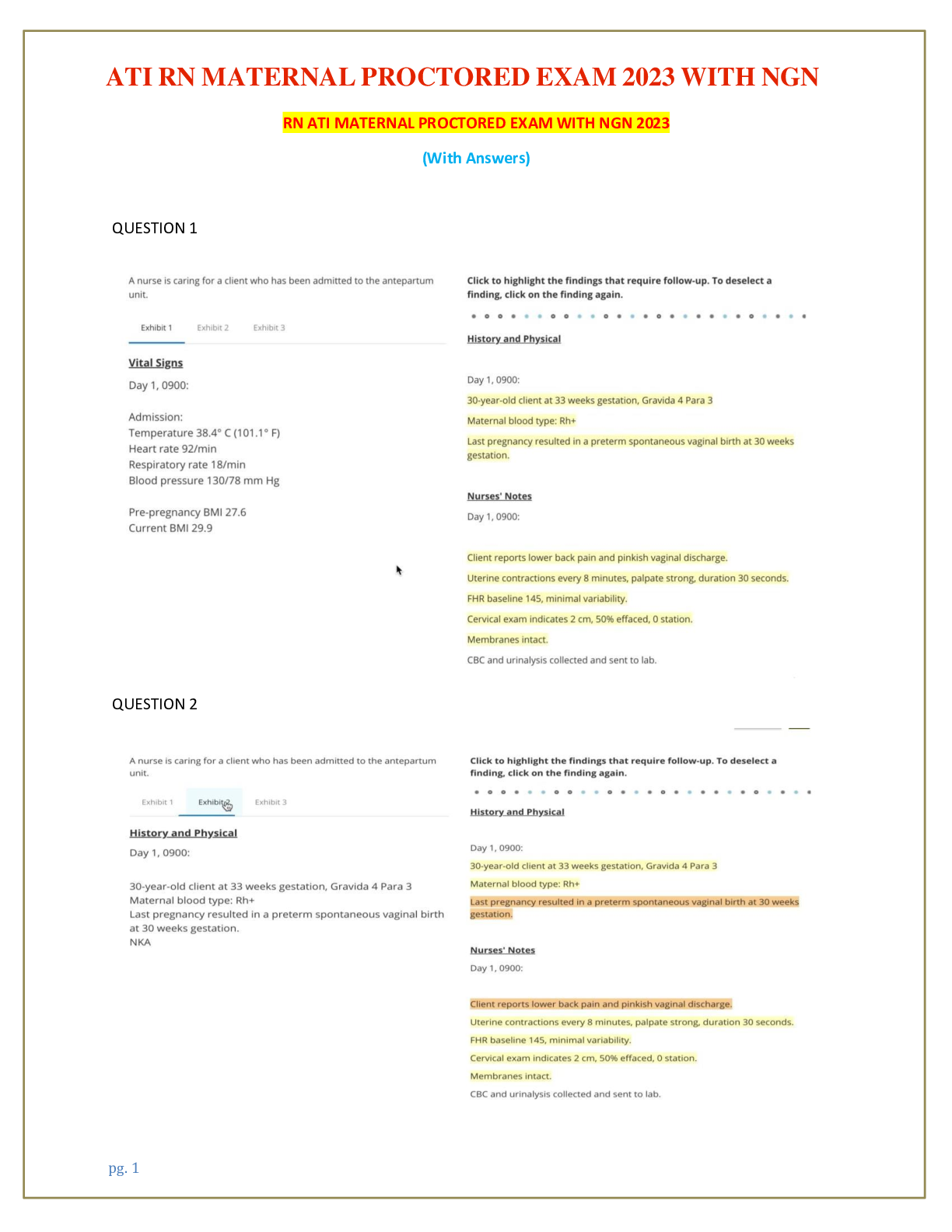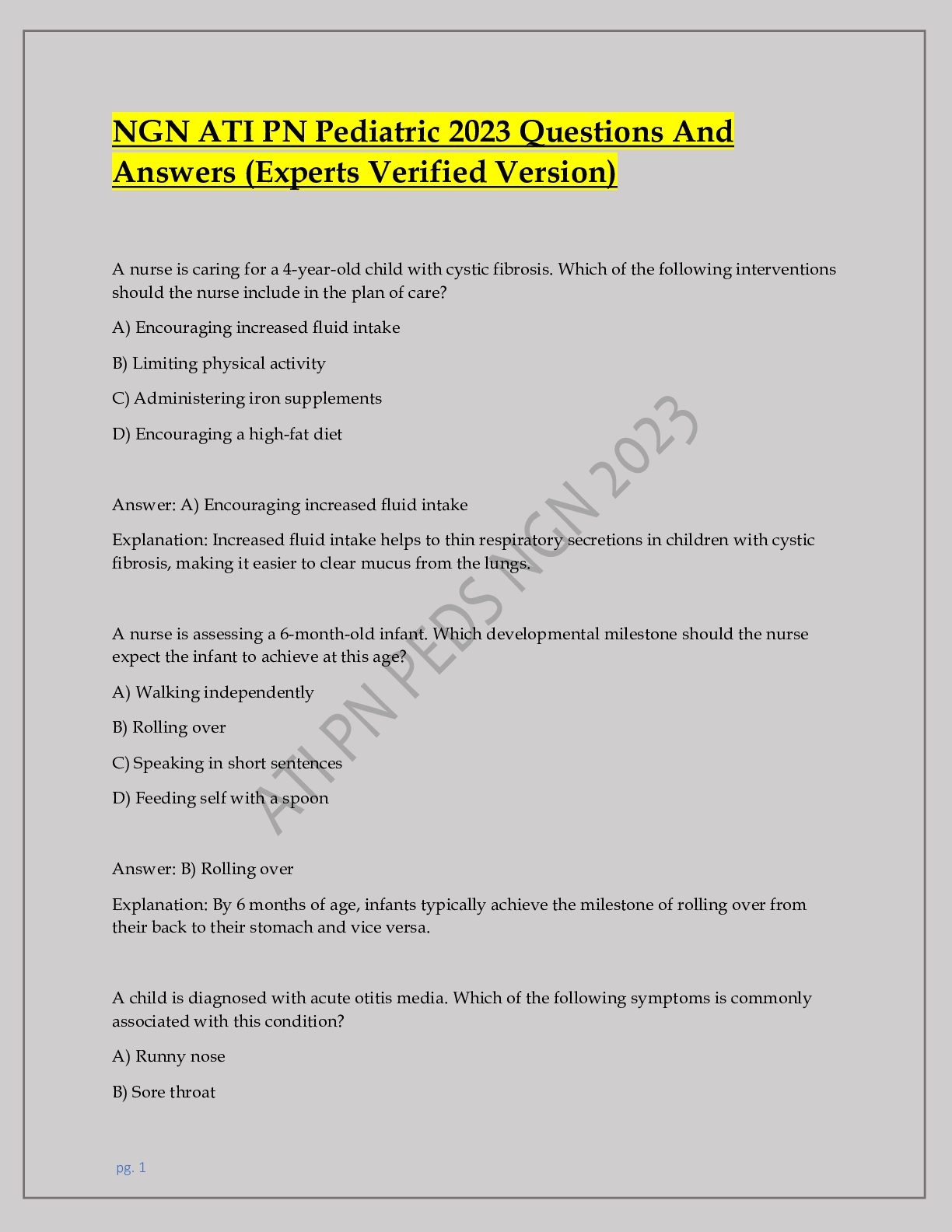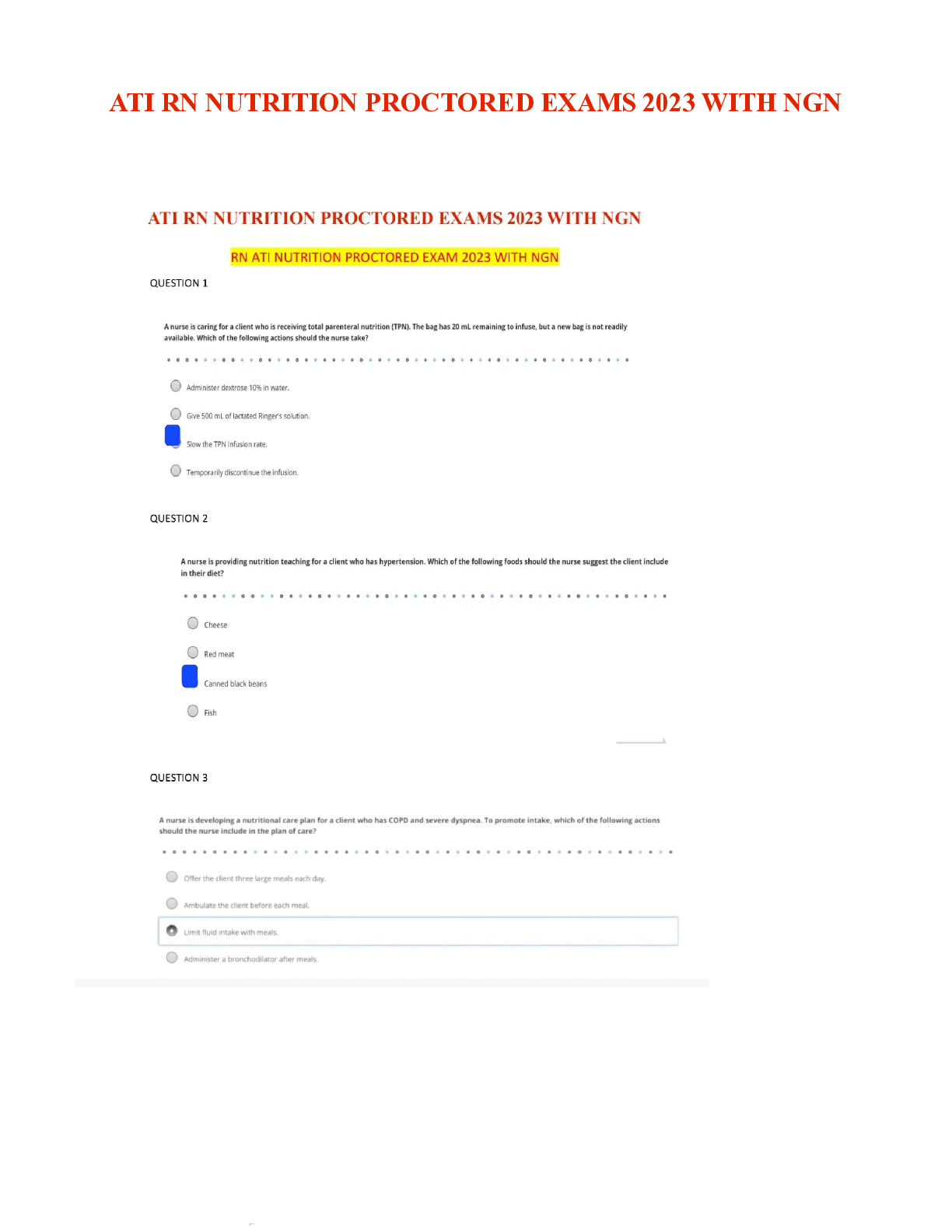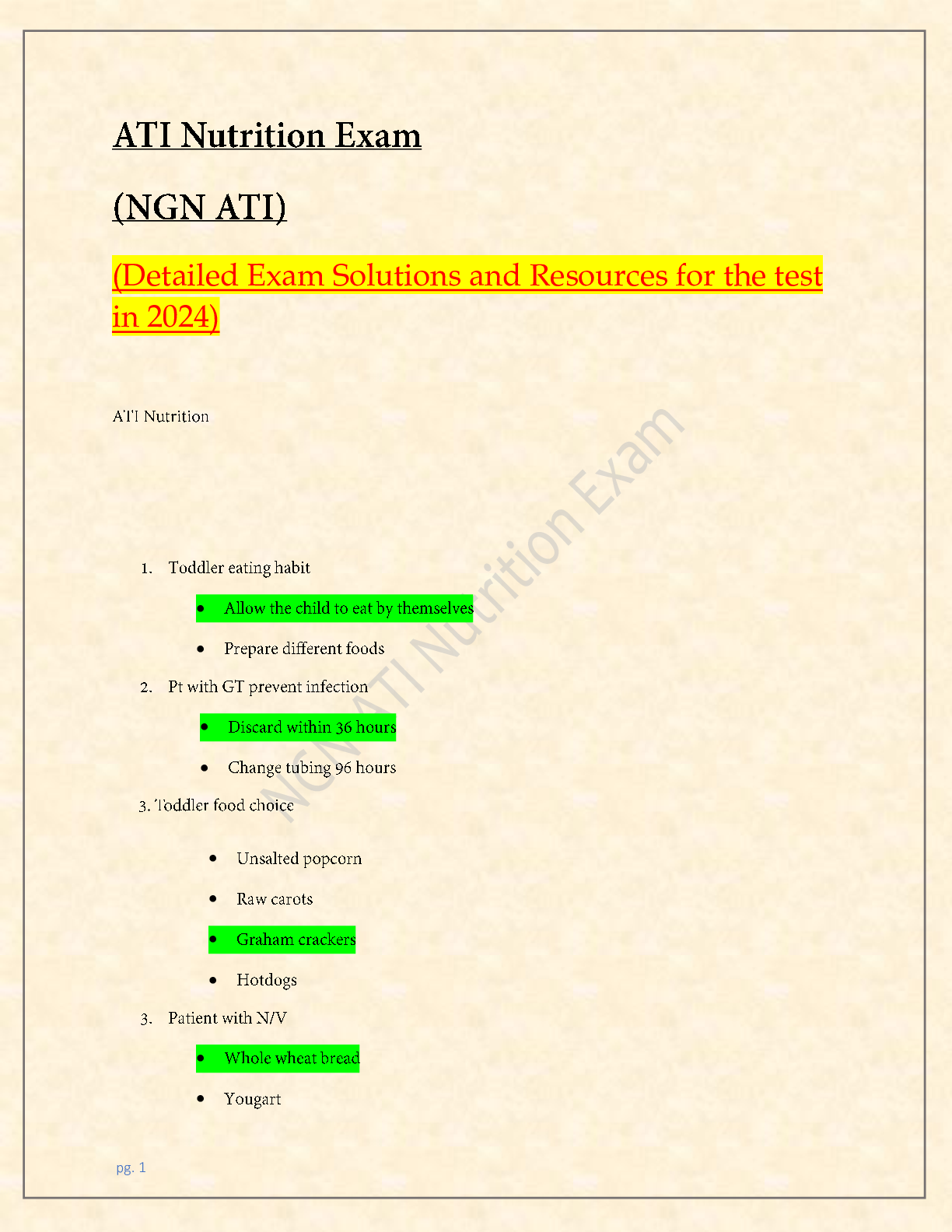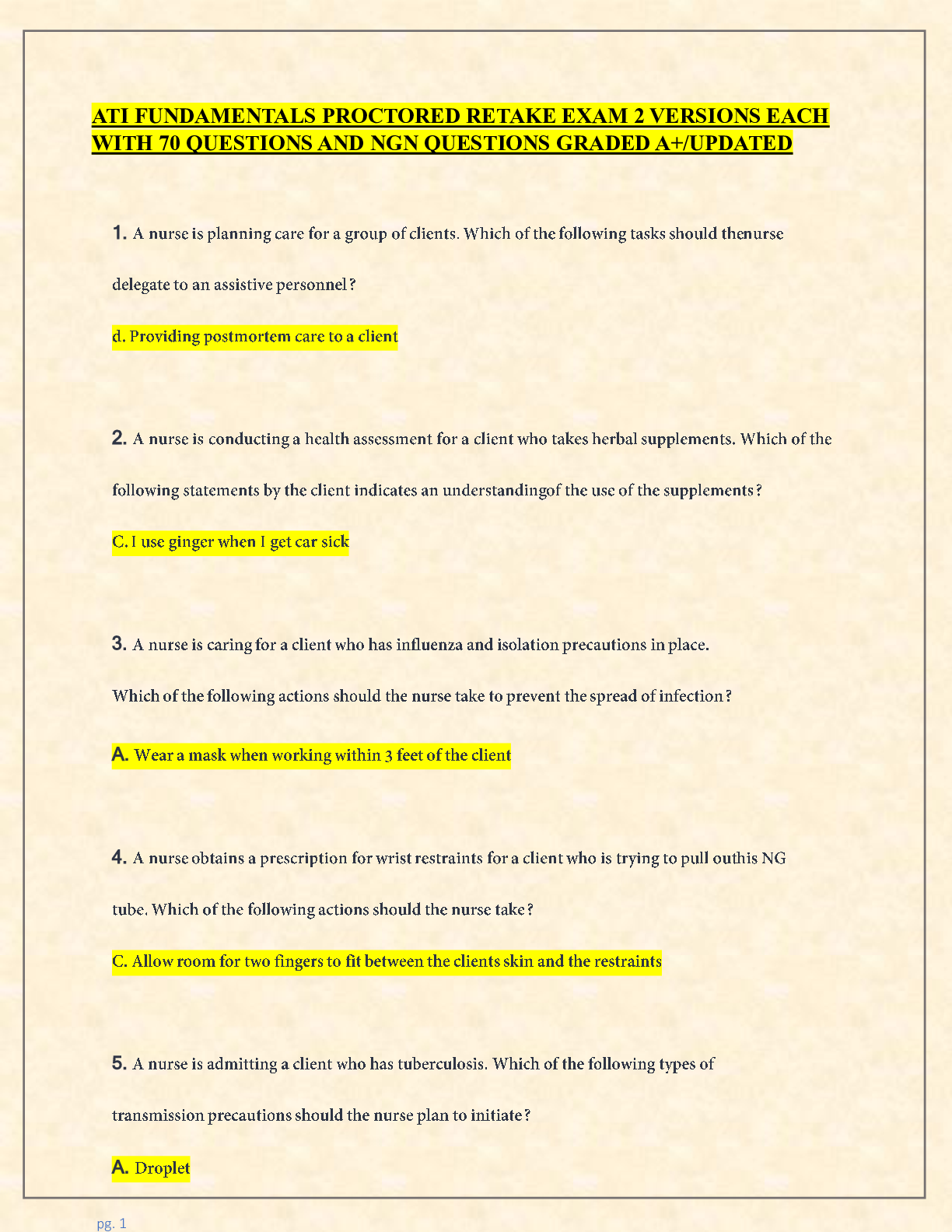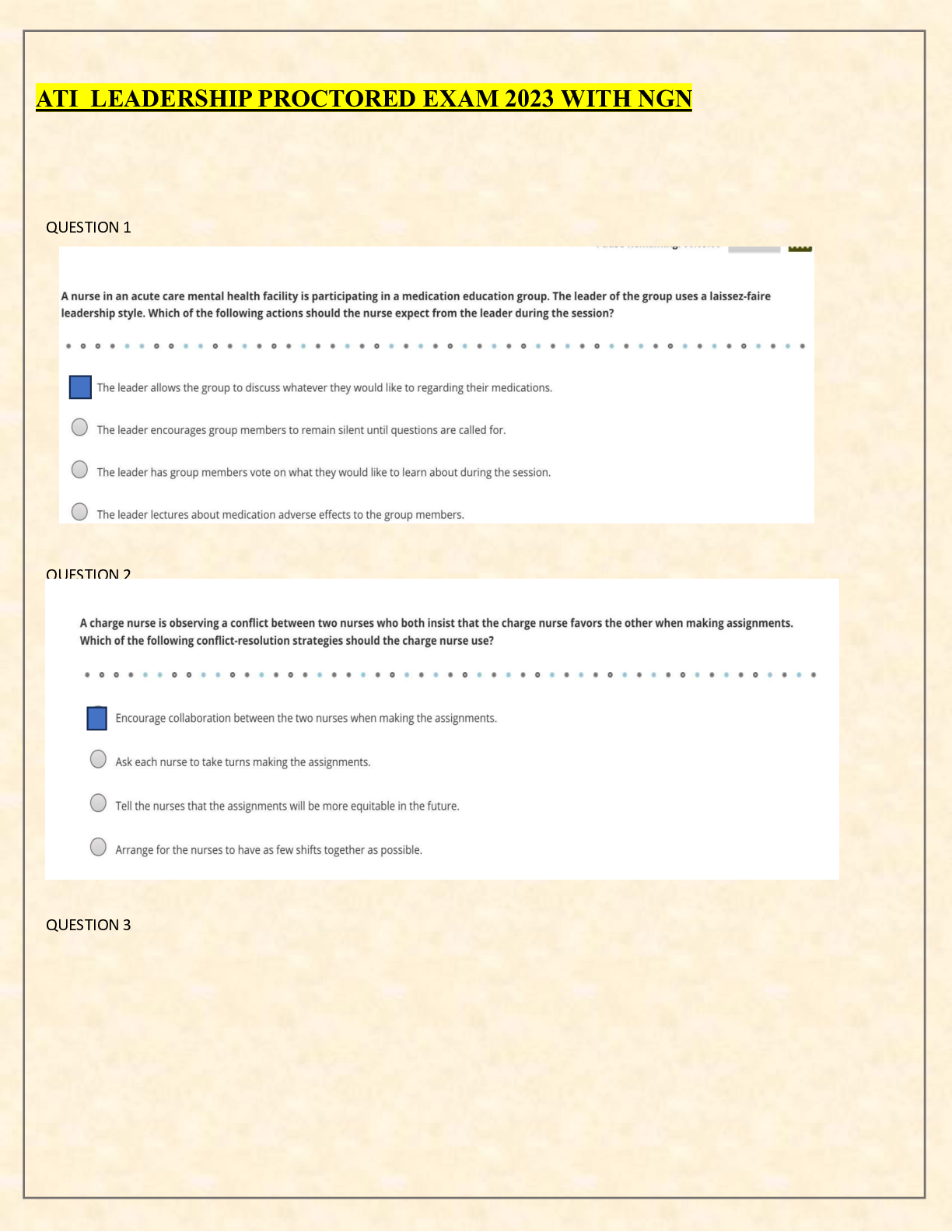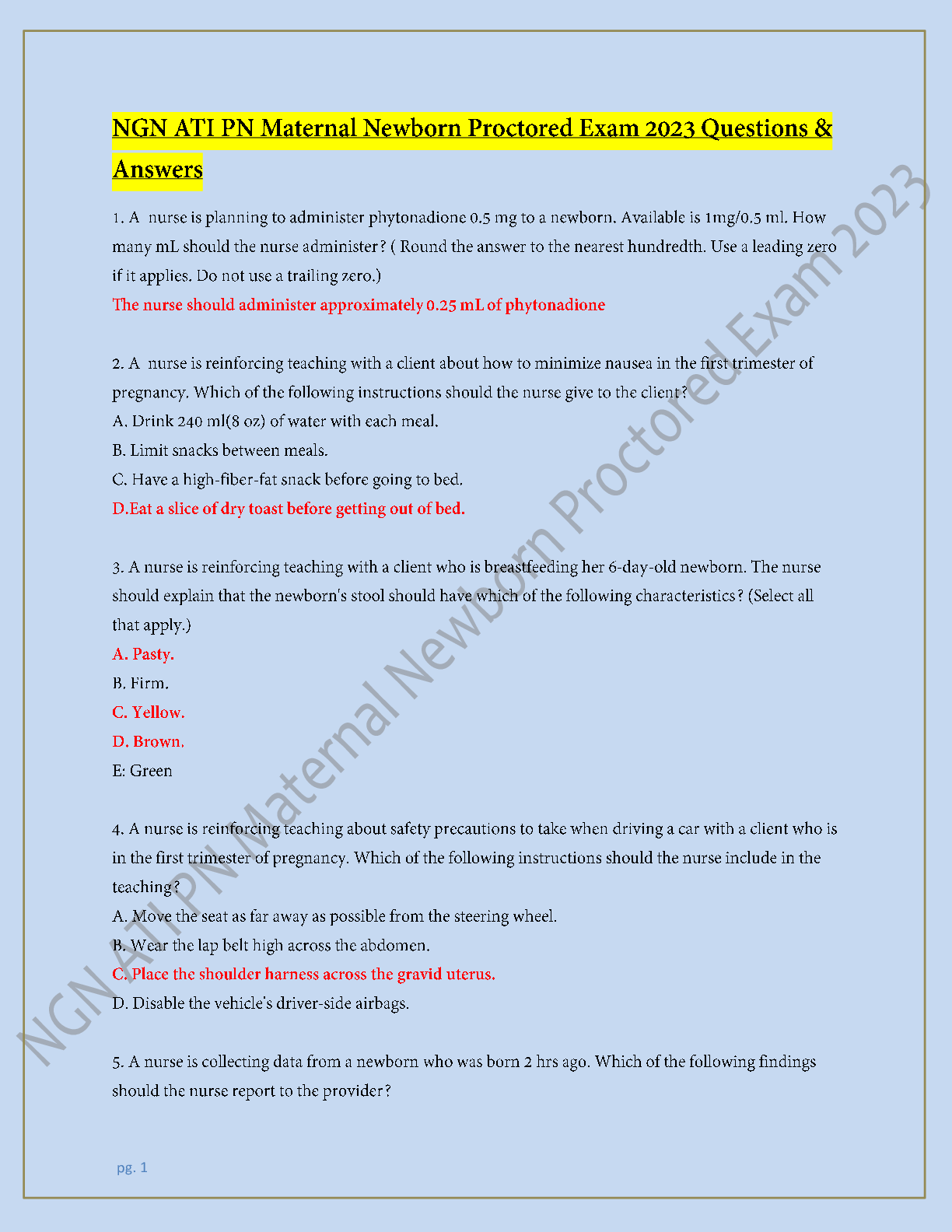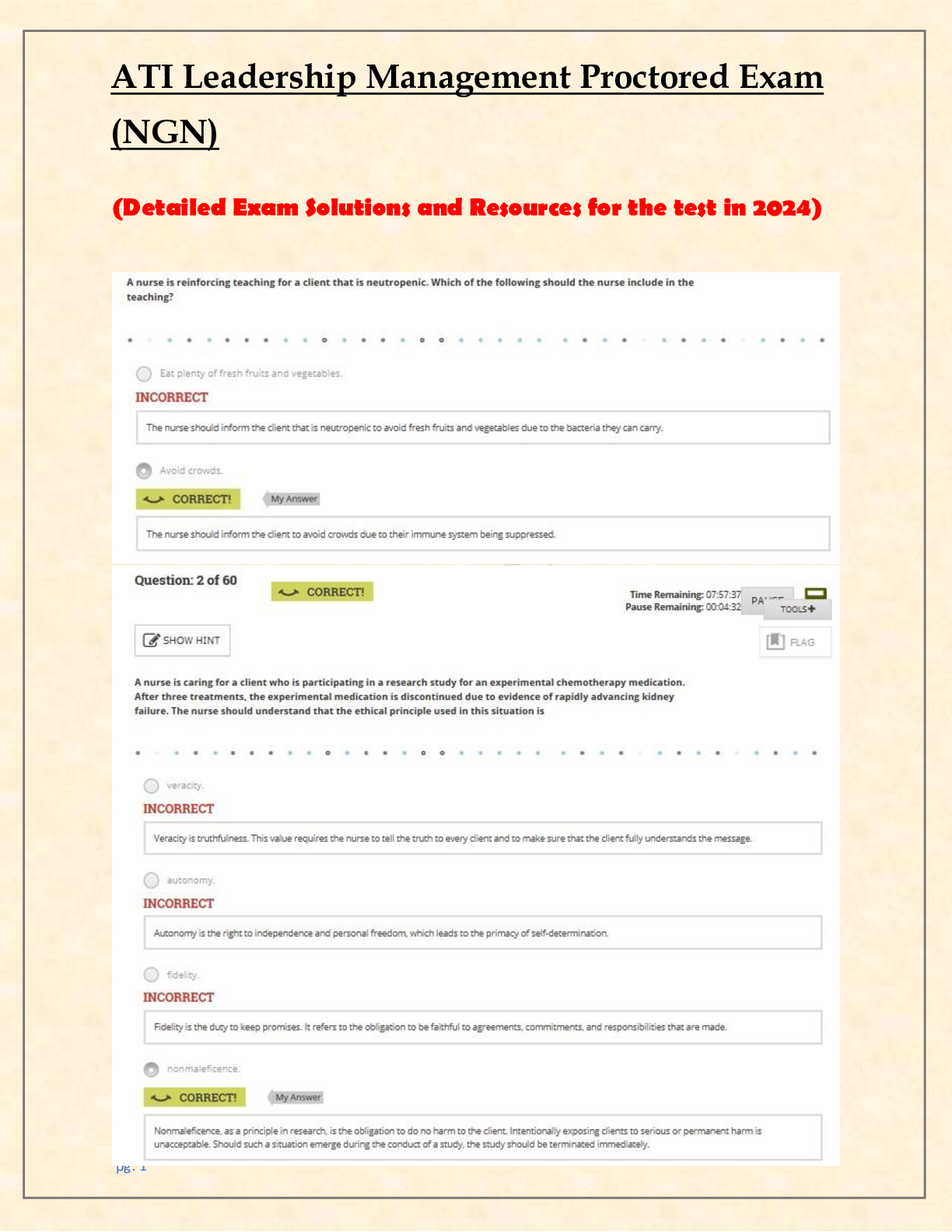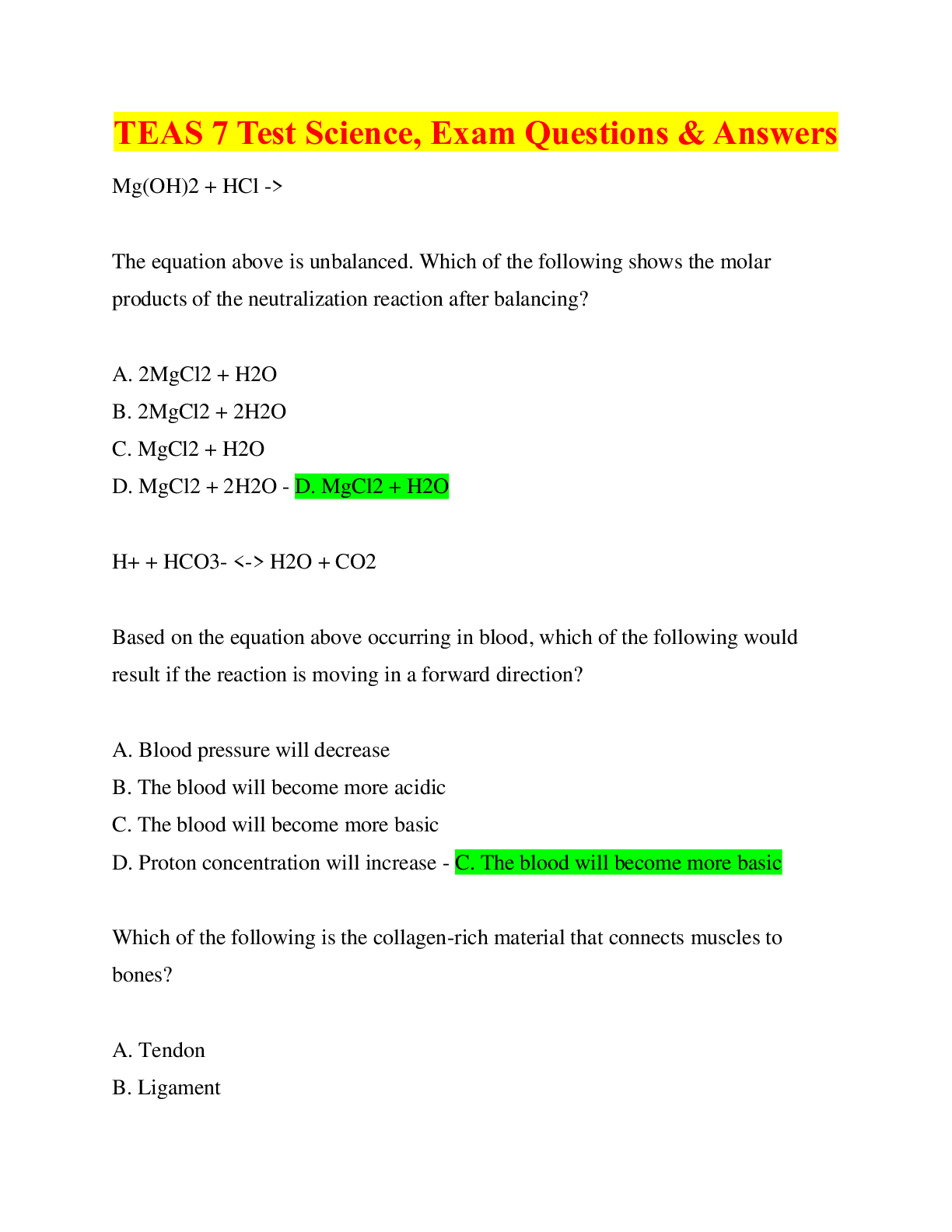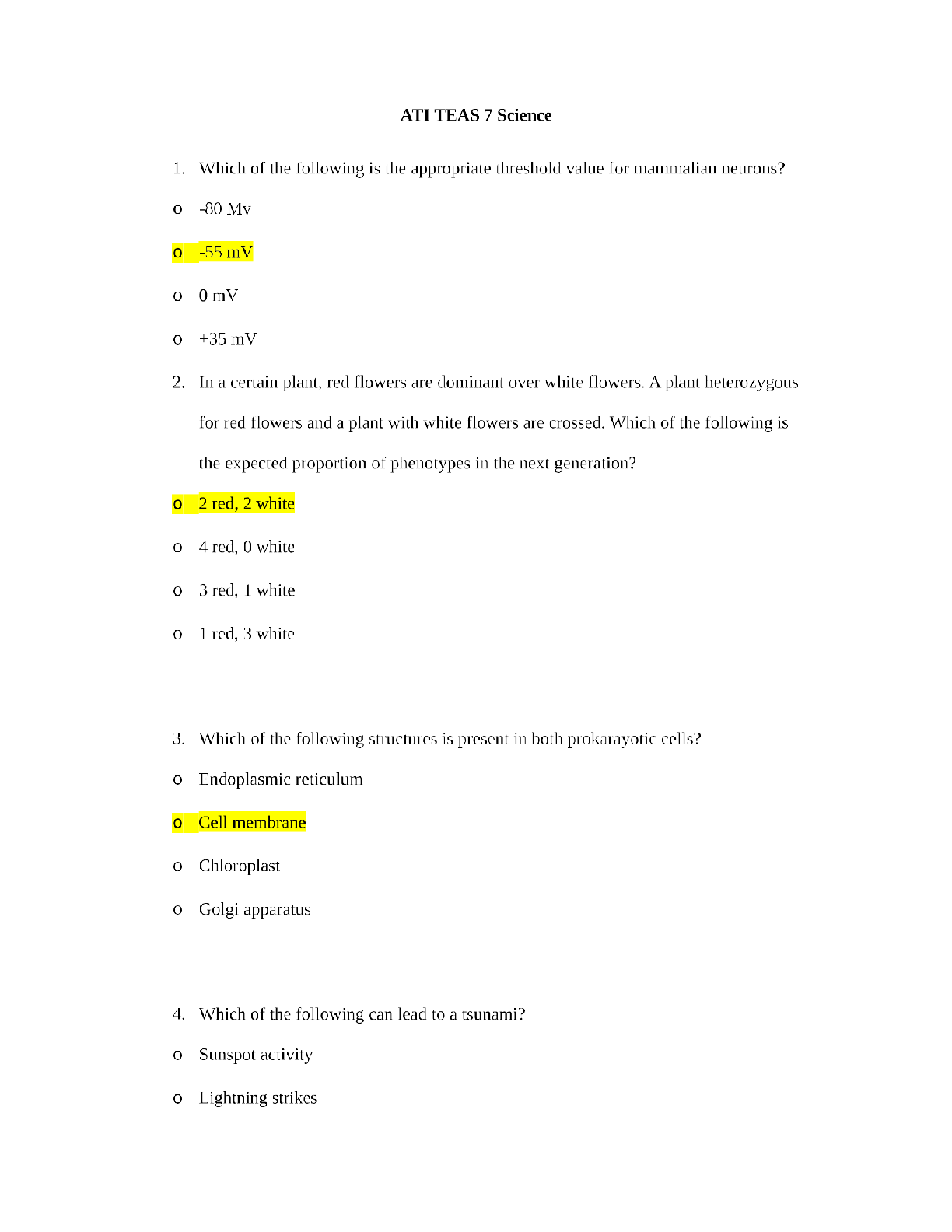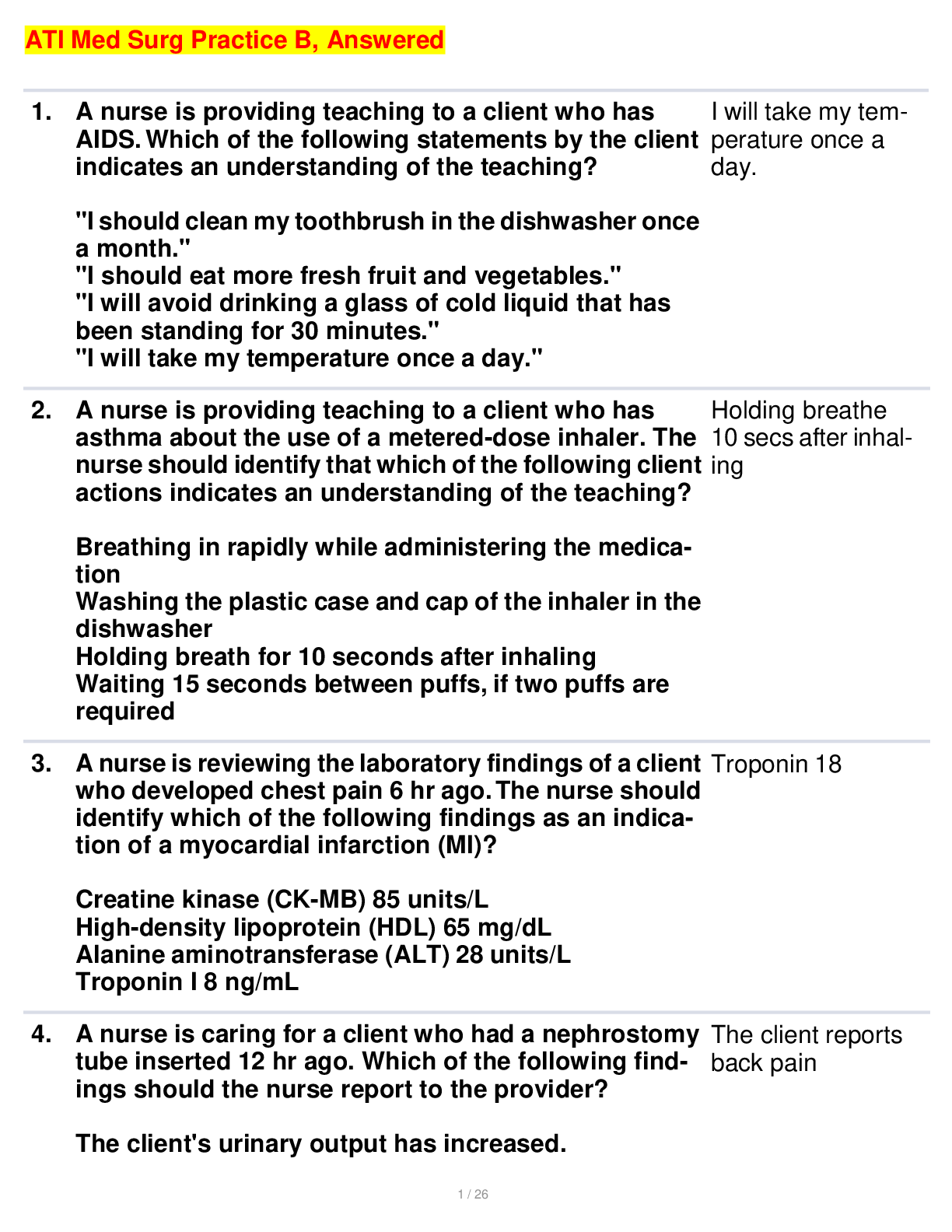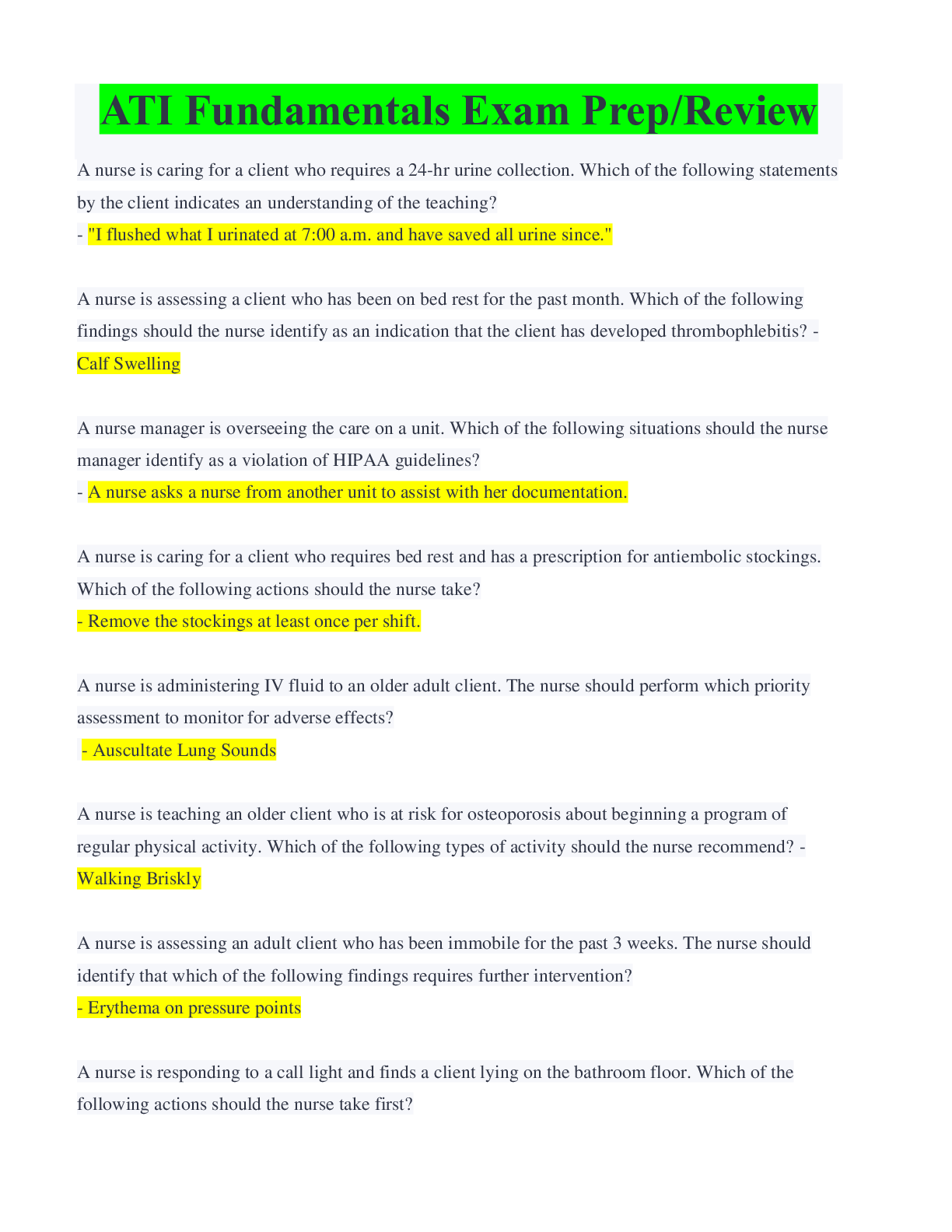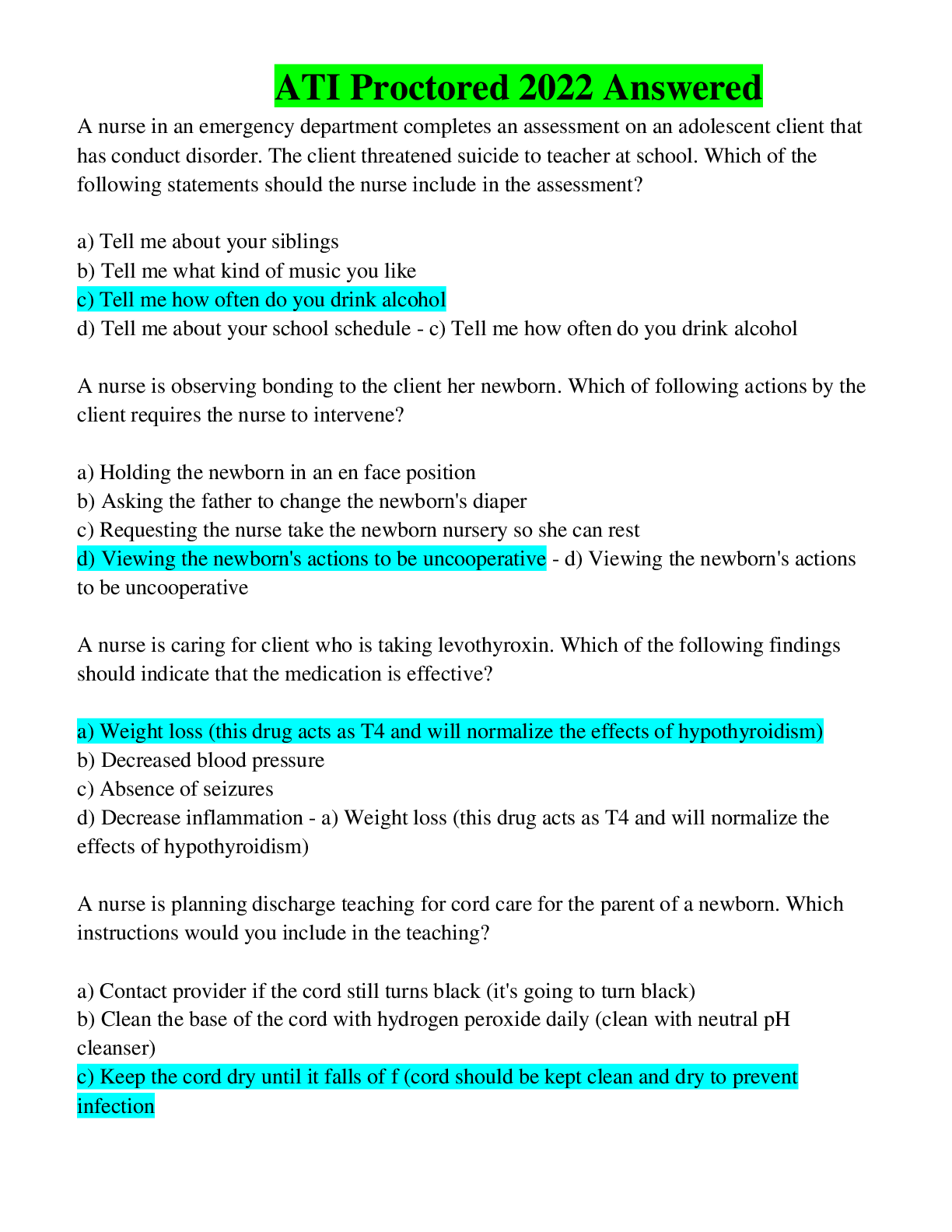ATI LEADERSHIP AND MANAGEMENT COMPREHENSIVE EXAM STUDYGUIDE
Document Content and Description Below
Which is a recommended guideline for safe computerized charting? ans: Passwords to the computer system should only be changed if lost. 2. Computer terminals may be left unattended during client-c... are activities. 3. Accidental deletions from the computerized file need to be reported to the nursing manager or supervisor. (correct) 4. Copies of printouts from computerized files should be kept on a clipboard at the nurses' station for other nurses to access. rationale: After any inadvertent deletions of permanent computerized records, the nurse should type an explanation into the computer file with the date, time, and his or her initials. The nurse should also contact the nursing manager or supervisor with a written explanation of the situation. Options 1, 2, and 4 represent unsafe charting actions. Only option 3 follows the guidelines for safe computer charting. The licensed practical nurse (LPN) enters a client's room and finds the client sitting on the floor. The LPN calls the registered nurse, who checks the client thoroughly and then assists the client back into bed. The LPN completes an incident report, and the nursing supervisor and health care provider (HCP) are notified of the incident. Which is the next nursing action regarding the incident? ans: Place the incident report in the client's chart. 2. Make a copy of the incident report for the HCP. 3. Document a complete entry in the client's record concerning the incident. (correct) 4. Document in the client's record that an incident report has been completed RATIONALE: The incident report is confidential and privileged information, and it should not be copied, placed in the chart, or have any reference made to it in the client's record. The incident report is not a substitute for a complete entry in the client's record concerning the incident. An unconscious client, bleeding profusely, is brought to the emergency department after a serious accident. Surgery is required immediately to save the client's life. With regard to informed consent for the surgical procedure, which is the best action? ans: Call the nursing supervisor to initiate a court order for the surgical procedure. 2. Try calling the client's spouse to obtain telephone consent before the surgical procedure. 3. Ask the friend who accompanied the client to the emergency department to sign the consent form. 4. Transport the client to the operating department immediately, as required by the health care provider, without obtaining an informed consent. (CORRECT) RATIONALE: Generally there are only two instances in which the informed consent of an adult client is not needed. One instance is when an emergency is present and delaying treatment for the purpose of obtaining informed consent would result in injury or death to the client. The second instance is when the client waives the right to give informed consent. Options 1, 2, and 3 are inappropriate The nurse arrives at work and is told to report (float) to the pediatric unit for the day because the unit is understaffed and needs additional nurses to care for the clients. The nurse has never worked in the pediatric unit. Which is the appropriate nursing action? ans: . Call the hospital lawyer. 2. Call the nursing supervisor. 3. Refuse to float to the pediatric unit. 4. Report to the pediatric unit and identify tasks that can be safely performed (correct) RATIONALE: Floating is an acceptable legal practice used by hospitals to solve their understaffing problems. Legally the nurse cannot refuse to float unless a union contract guarantees that the nurse can only work in a specified area or the nurse can prove a lack of knowledge for the performance of assigned tasks. When faced with this situation, the nurse should identify potential areas of harm to the client The nurse enters a client's room and notes that the client's lawyer is present and that the client is preparing a living will. The living will requires that the client's signature be witnessed, and the client asks the nurse to witness the signature. Which is the appropriate nursing action? ans: Decline to sign the will. (CORRECT) 2. Sign the will as a witness to the signature only. 3. Call the hospital lawyer before signing the will. 4. Sign the will, clearly identifying credentials and employment agency. RATIONALE: Living wills are required to be in writing and signed by the client. The client's signature either must be witnessed by specified individuals or notarized. Many states prohibit any employee from being a witness, including the nurse in a facility in which the client is receiving care. The nurse finds the client lying on the floor. The nurse calls the registered nurse, who checks the client and then calls the nursing supervisor and the health care provider to inform them of the occurrence. The nurse completes the incident report for which purpose? ans: roviding clients with necessary stabilizing treatments 2. A method of promoting quality care and risk management (correct) 3. Determining the effectiveness of interventions in relation to outcomes 4. The appropriate method of reporting to local, state, and federal agencies RATIONALE: Proper documentation of unusual occurrences, incidents, accidents, and the nursing actions taken as a result of the occurrence are internal to the institution or agency. Documentation on the incident report allows the nurse and administration to review the quality of care and determine any potential risks present. Options 1, 3, and 4 are incorrect. The nurse observes that a client received pain medication 1 hour ago from another nurse, but the client still has severe pain. The nurse has previously observed this same occurrence. Based on the nurse practice act, the observing nurse should plan to take which action? ans: Report the information to the police. 2. Call the impaired nurse organization. 3. Talk with the nurse who gave the medication. 4. Report the information to a nursing supervisor. (CORRECT) RATIONALE: Nurse practice acts require reporting the suspicion of impaired nurses. The state board of nursing has jurisdiction over the practice of nursing and may develop plans for treatment and supervision. This suspicion needs to be reported to the nursing supervisor, who will then report to the board of nursing. Options 1 and 2 are inappropriate. Option 3 may cause a conflict. A nurse lawyer provides an education session to the nursing staff regarding client rights. The nurse asks the lawyer to describe an example that may relate to invasion of client privacy. Which nursing action indicates a violation of client privacy? ans: Threatening to place a client in restraints [Show More]
Last updated: 1 year ago
Preview 1 out of 79 pages
Instant download

Instant download
Reviews( 0 )
Document information
Connected school, study & course
About the document
Uploaded On
May 23, 2022
Number of pages
79
Written in
Additional information
This document has been written for:
Uploaded
May 23, 2022
Downloads
0
Views
175

